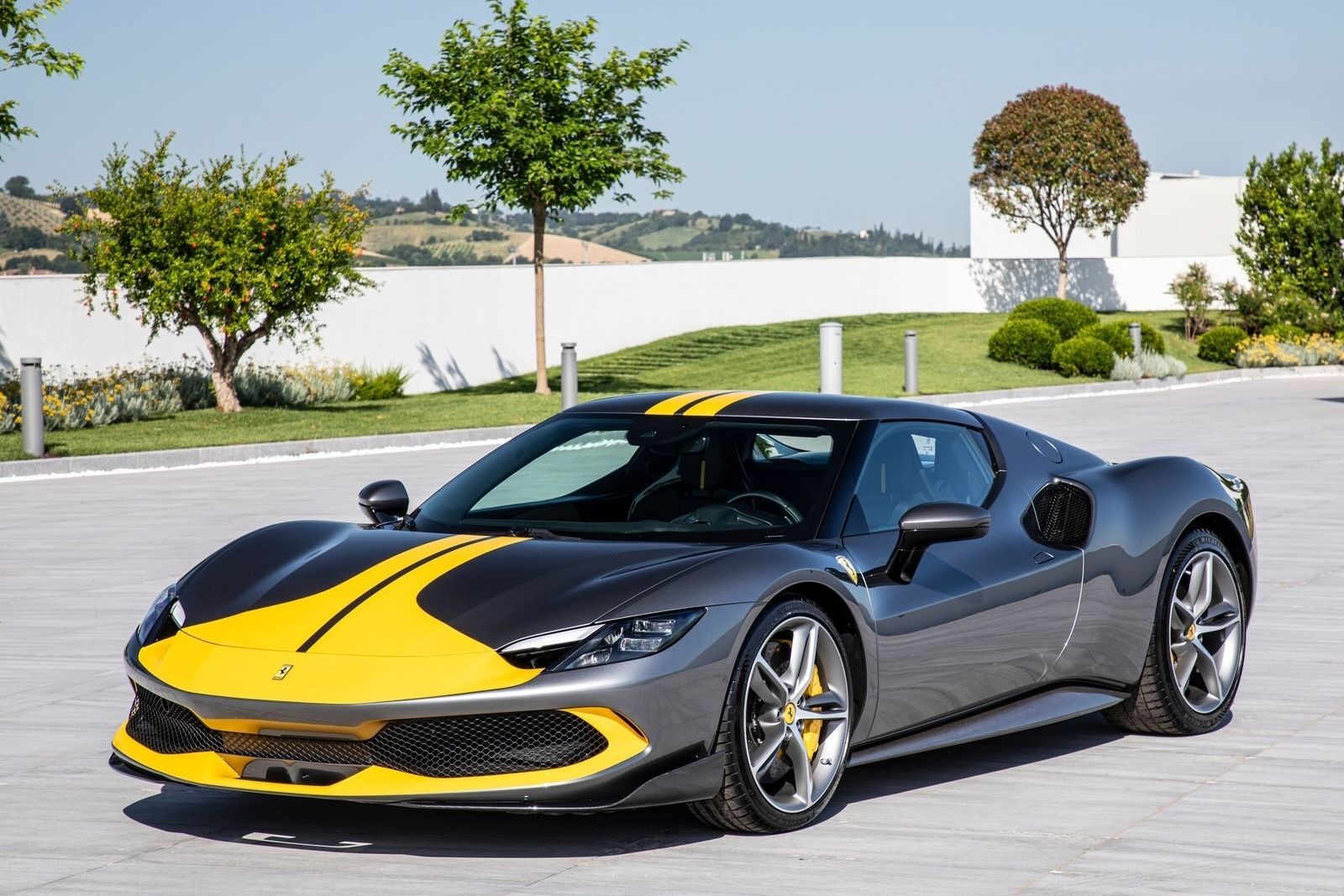
The Ferrari 296 GTB has just landed, and it has the kind of characteristics that grab headlines: 819 horsepower thanks to hybrid assistance, 0-60 in 2.9 seconds, and styling to make you swoon. This is the first V6-engined road car produced by Ferrari since the original Dino, a car that Enzo Ferrari didn't quite believe in. In fact, he didn't even believe in putting the engine anywhere but at the front of the car unless you wanted to go racing.
Nevertheless, the Dino came into existence and paved the way for the mid-engined Ferraris we've come to know and love. It's fitting, then, that the first V6-powered road car made by Ferrari in almost 50 years is a game-changer, and here's why.
Billed by Ferrari itself as one of the marque's "biggest achievements", the engine has a capacity of 2,992cc - which rounds up to a capacity of 3.0 liters - and has a pair of turbochargers strapped to it. That recipe sounds awfully familiar (ahem, Maserati MC20), so did Ferrari borrow from its cross-town cousins? Maserati said that this would never happen, and it hasn't. Instead, this is a new engine developed from scratch, and while the MC20's V6 produces a measly 621 hp, Ferrari's unit - codenamed F163 - makes 653 hp for a record-breaking specific output of 221 hp per liter - based on the engine's metric rating of 830 hp/PS - better than anything that Bugatti can do with a W16 or Mercedes-AMG can do with its four-pot.
So how did Ferrari achieve this, and how did the marque get such a stunning noise out of the V6? Well, with lots of hard work and numerous small changes. Speaking with Road & Track, Ferrari chief technical officer Michael Leiters said, "there are many elements you have to consider to design sound. The ignition order, the combustion itself, the architecture, the lengths of the tubes, the positions of the turbos, etc. We decided through simulations and tests, to have a single-exit exhaust for more level and more volume, but also [to improve] the quality of the sound." Part of the cause of this sound is the 120-degree angle of the engine, but that's not the only reason for this design.
As you may already know, the 296 GTB has a wheelbase some two inches shorter than that of the F8 Tributo, so there's less overall space than before. Furthermore, this car is built around the goal of being "fun to drive", so a low center of gravity would help with handling too. Okay, so why not go with a flat six? Well, if we're talking about just the engine, a flat six would have a lower center of gravity, but when adding intake manifolds, turbos, exhaust manifolds, wastegates, actuators, and everything else required for a turbo setup, the wide-angle V6 still wins. And as much as we trust in Ferrari's expertise, extracting that signature high-pitched noise from a turbocharged flat-six is nearly impossible.
To make the engine work at such an angle, with the power that Ferrari wanted, "was a big challenge. The NVH (noise, vibration, and harshness) and behavior of an engine with 120 degrees [was] very difficult. We don't have a counter-balance [to] compensate for the vibrations. We have only the crankshaft, and that is leading to vibrations that are really really difficult to manage. We worked a lot on how to [strengthen] the structure. This is important not only because of the mechanical structure but also the thermal stress on the material." To get around this, Leiters says that Ferrari developed new alloys to resist the heat.
Other advances made to the engine include a high-pressure direct-injection system that sprays fuel into the combustion chamber with a stunning force of 5,000 psi. The combustion chambers are derived from the SF90 Stradale, but with redesigned intake and exhaust ducts to optimize flow. Combined with that high-pressure injection system, the ducts ensure that air and fuel get mixed as thoroughly as possible before ignition takes place.
Next, mono-scroll IHI turbochargers were redesigned with stronger metals that can withstand a whopping 180,000 rpm. Yet, engineers were able to reduce the diameter of the compressor wheel by 11 percent compared with those in the F8 Tributo. Efficiency went up by 24 percent while rotating mass dropped by 11 percent. Those turbos are now mounted inside the vee of the engine.
These changes mean that the intakes - made of a "light thermoplastic material" - now sit on the outside of the cylinder heads, which negates the need for a tall and heavy intake plenum and accompanying components that are found on all other new Ferrari products. With the turbos on top, routing the exhaust is much more straightforward. It has minimal bends and both the manifold and catalytic converter housings are made entirely from Inconel, so weight is once again saved and the happy byproduct is an instantly recognizable, "shrill" sound.
We're absolutely blown away by this magnificent engine, and we can't wait to be pushed back into our seats when we get to experience it firsthand. Still, it's crazy to think that, had Ferrari never gone against Enzo's philosophy and experimented with a V6 and a mid-engine layout, not only would the 296 GTB never have come about, Ferrari may have become known as the Italian Aston Martin. But in keeping with Enzo's ambitions of being the best, Ferrari has once again proved that it, more so than any other manufacturer, knows how to make the stuff of dreams. Bravo, Ferrari, bravo.
